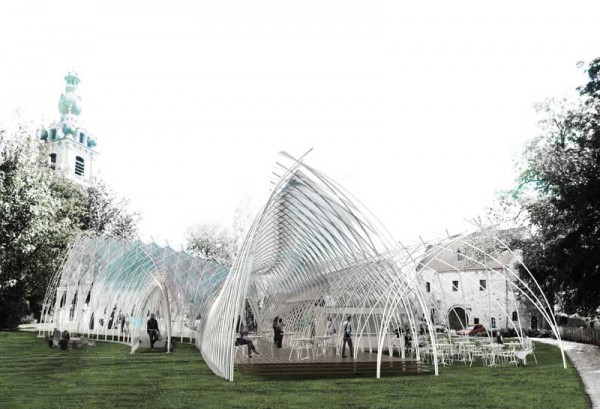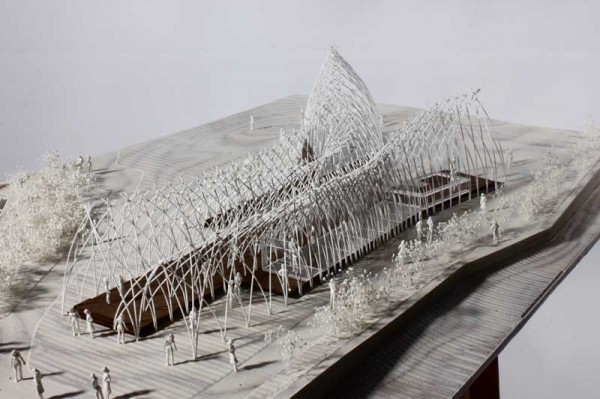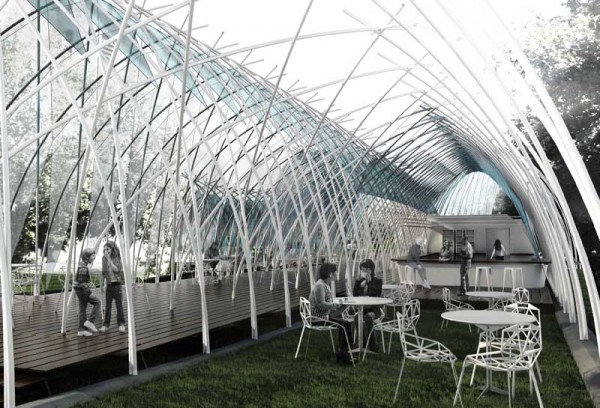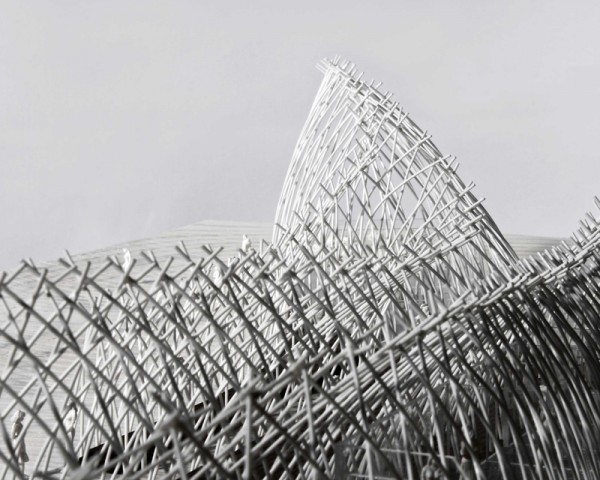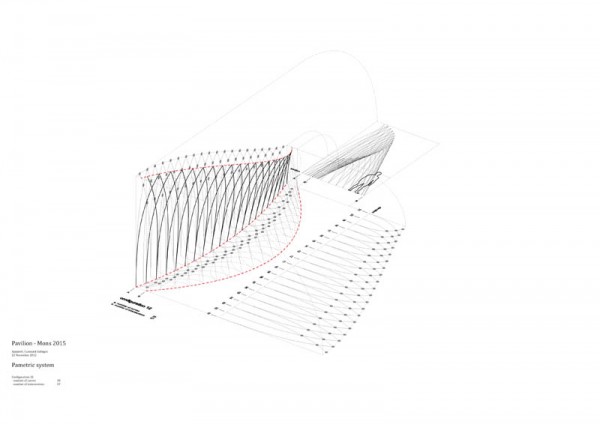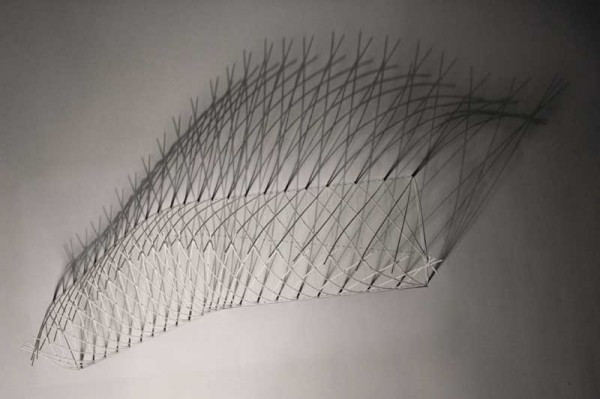Appareil and the team of Edouard Cabay, Elena Poropat, Julie Soulat, Chartotte Arres, and Alexandre Dubor have introduced “Naves”, to the city of Mons, Belgium, as part of “Mons, Capital of Culture 2015”.
Naves is an investigation into lightness and transparency. The gothic edifice, by reducing the building to its bare bones, shows the perfect correspondence of lightness as manifestation and vision of light itself. It achieves transparency as it allows for light to the point of incorporating it, towards the absolute lightness. The lightest pillars, the lightest arches, the lightest vaults, the lightest structure are all included in producing the lightest building as a glorification of light. A complex meshwork of linear elements based on the ogive (Gothic arch) and tending to maximum permeability and minimum weight, the gothic churches were building belonging to the sky. They are the house of light and allow through the window for its very manifestation.
Located within the center of the historical patrimony of the medieval city of Mons, the project leans on the ogival arch of the neighboring gothic church of Sainte Waudru supporting a construction technology based on curved geometries inherited by the material properties of hollow-sectioned glass fiber tubes.
Driven by the inspirations of our gothic predecessors, the project is an investigation into lightness and transparency where the ‘curve’ is revisited as a bending element caught within a woven collaborative structure in which the use of compression is replaced by the one in tension for the building to achieve maximum lightness. The advantage of the technological system lies in the optimization of materials and the minimal footprint that the building possesses. Combined with recyclable materials such as a wooden deck and partitions as well as a temporary ETFE skin, most of the construction elements are entirely reusable.
Echoing the nave, the spatial organization of the gothic church, the spatial distribution of the pavilion is driven by the linear directions dictated the pre- stressed assembly of rods, unfolding the program along a central circulation axis providing the access to the cultural spaces. The naves are defined by differentiated sections and rods density, modulating the inner volumes into vanishing extremities, proposing a suave transition between the building and the vegetation of the park. The central space, at this junction between artifact and nature, unveils as a theatre.

